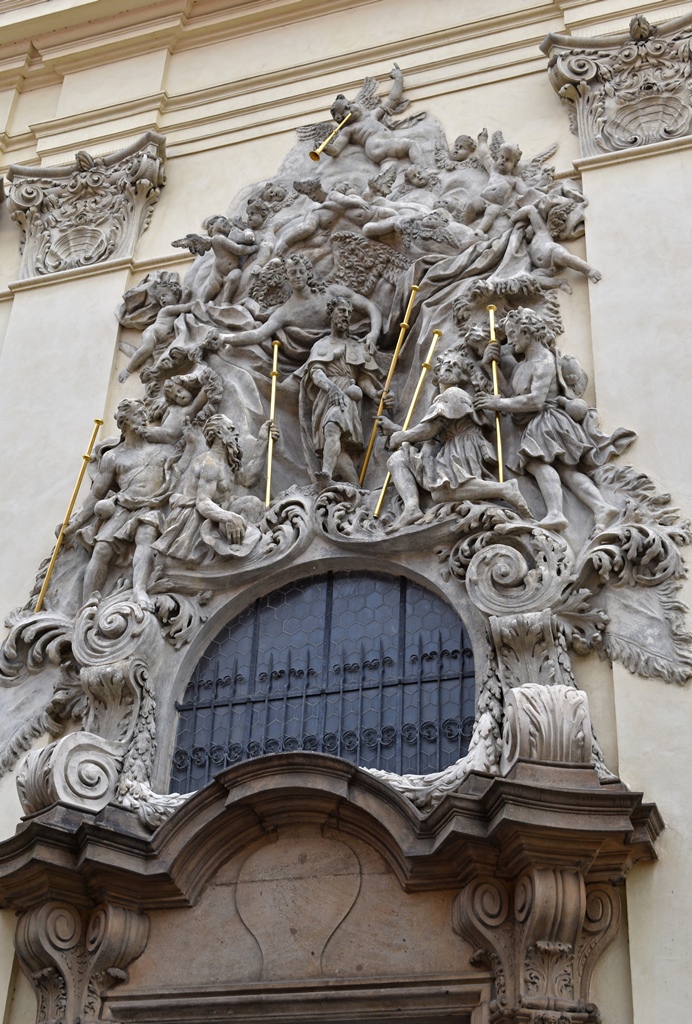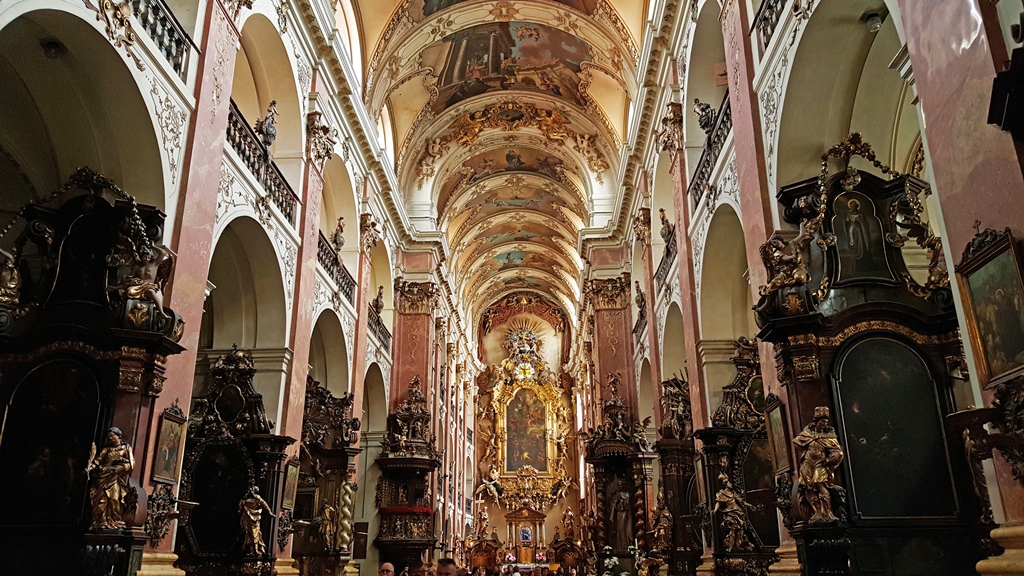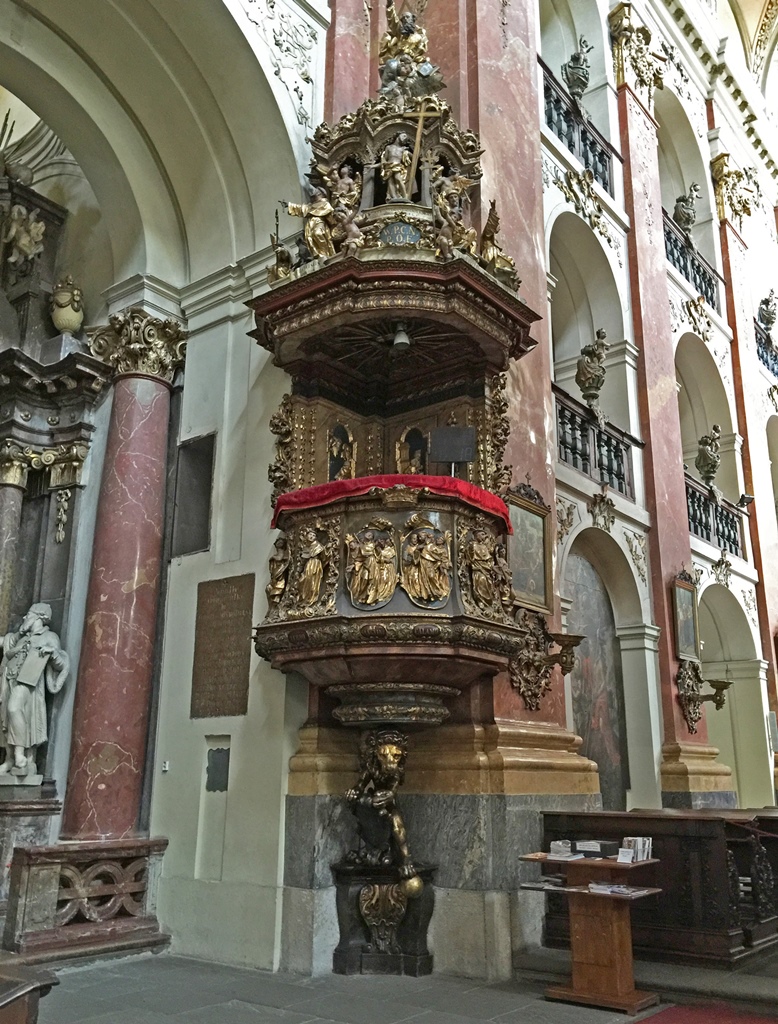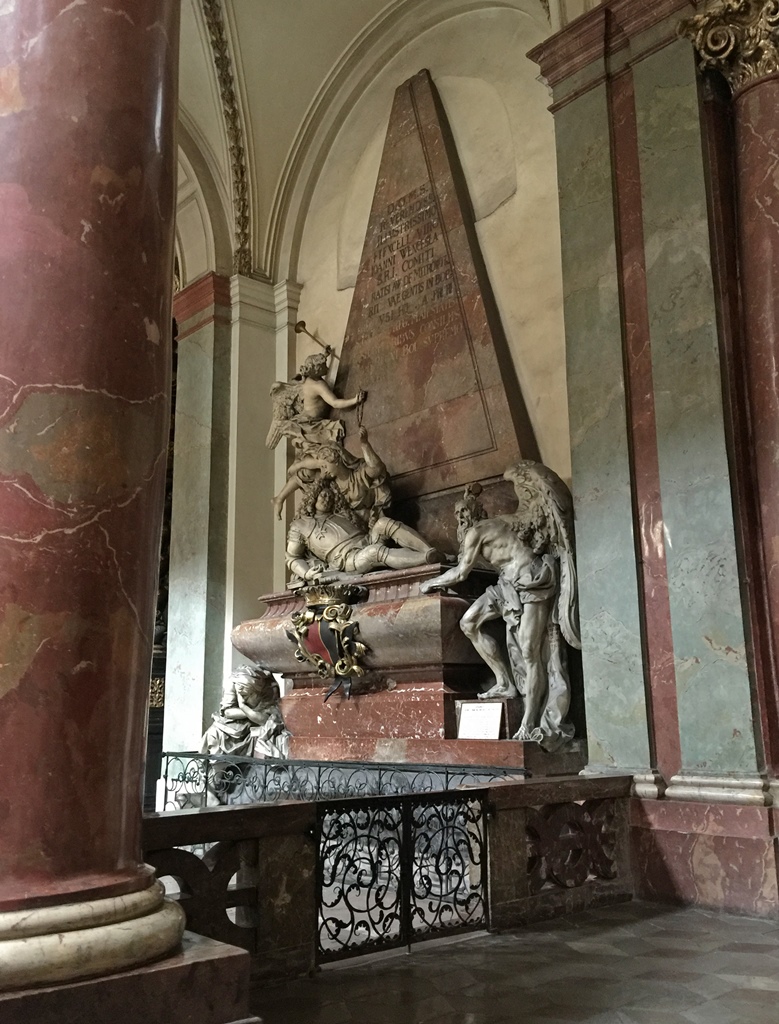To the east of Prague’s Old Town Square, back beyond the prominent Týn Church, is another
church, devoted to St. James the Greater. The church is currently Roman Catholic, and was
elevated in 1974 to the status of minor basilica by Pope Paul VI. A church was first built
in this spot in the 13th Century as part of a Minorite monastery (the Minorites are also
known as the Conventual Franciscans) under King Wenceslas I (not to be confused with the 10th
Century St. Wenceslas, who was technically a prince, despite the Christmas carol). Like many
other churches in the years before electricity, this one developed the bad habit of burning
up every once in a while, accomplishing this trick in 1316 and 1689 (an 1841 fire destroyed
part of the monastery but spared the church). After the 1689 fire, the church was rebuilt in
the Baroque style it retains today.
The church can be a little tricky to find, as it’s surrounded by narrow streets. A decent
map or GPS should get you there without much trouble, though.
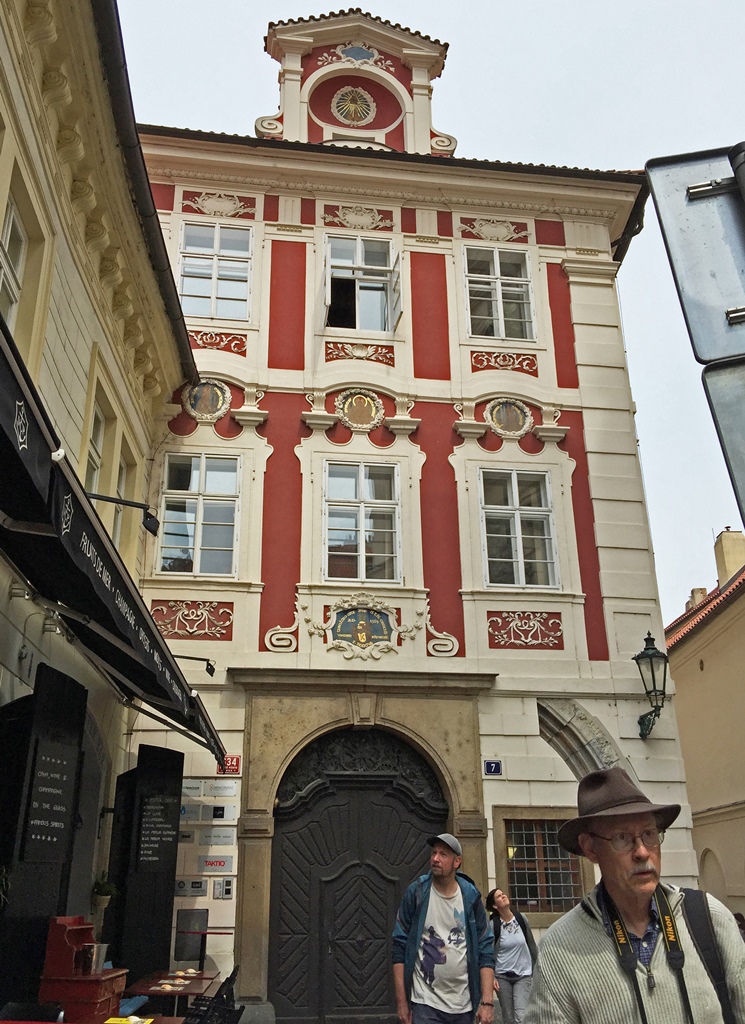
Bob and Building on Malá Štupartská
The Baroque decoration of the church makes itself known in reliefs above the doors in the western
wall (there are two doors, plus one former door which has been bricked up). All of the western
wall reliefs were executed in stucco by the artist Ottavio Mosto, between 1695 and 1701.
Center Door - St. James the Greater
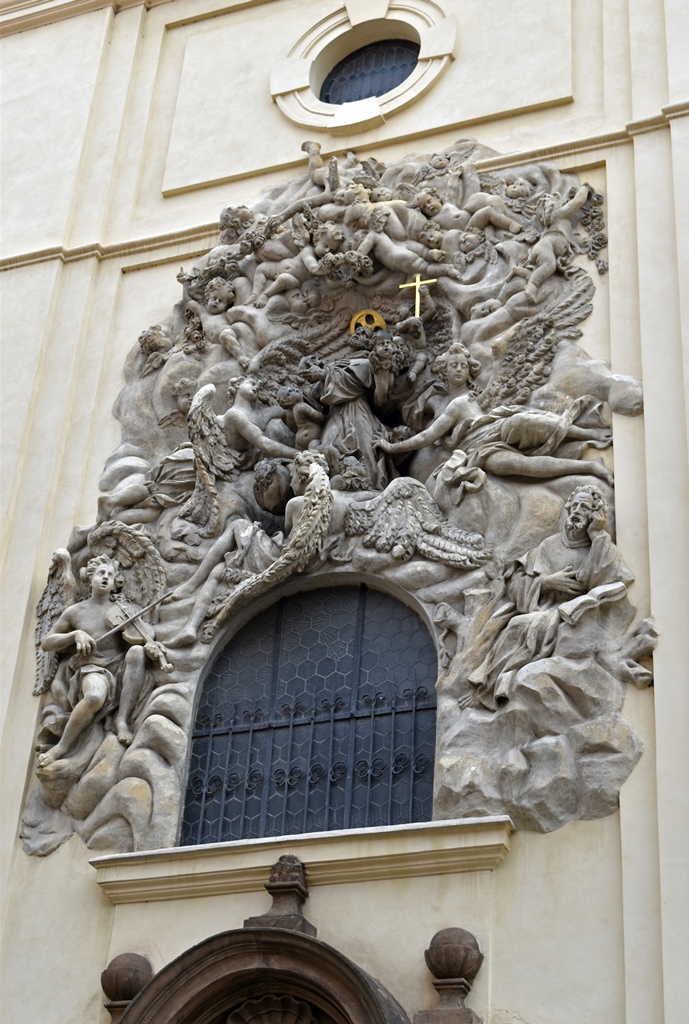
Left Door - St. Anthony of Padua
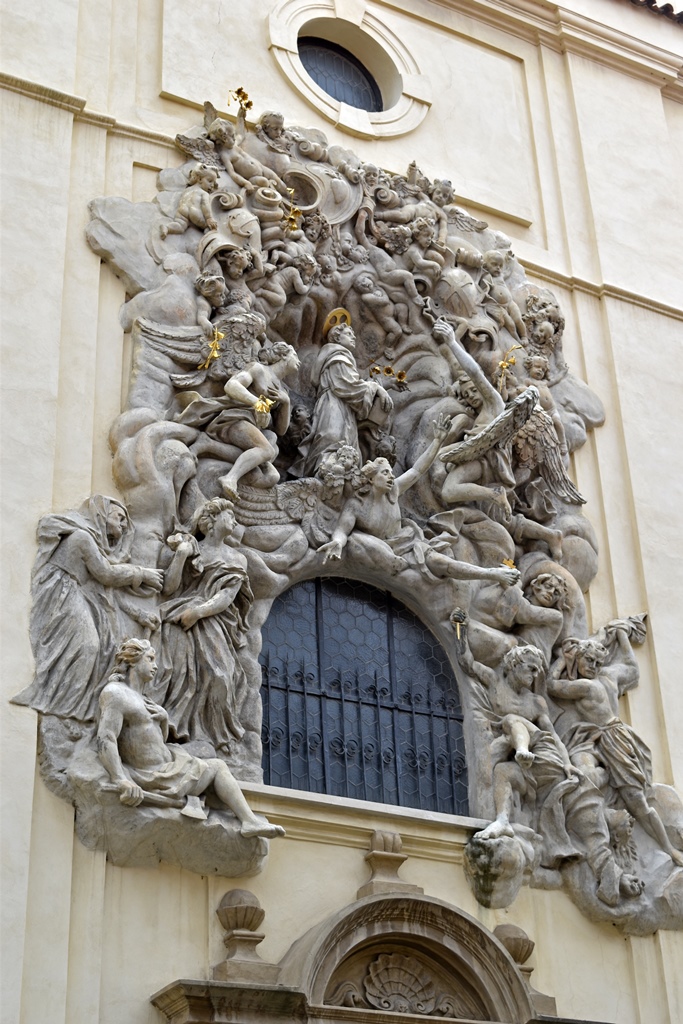
Right 'Door' - St. Francis of Assisi
We walked into the church through the center door, didn’t pay anyone because admission was free,
and gazed upon the glory of St. James.
Inside the Church
The Church of St. James is laid out as a three-aisle basilica, with an elongated choir at the
front. Including the choir, the church is the third-longest in Prague. The area we were allowed
to explore was limited, with other areas being roped off. These “other areas” included the choir
and pretty much anything to either side of the center aisle. We started by walking up to the
edge of the choir and looking into it. Most of the interesting stuff in the choir was at the far
end, so we weren’t able to get very close to it, with the choir being so long. Fortunately there
is telephoto. The interesting things at the other end consist of a large, elaborately framed
painting of the Passion of St. James, and an altar which holds a small statue from about
1500 called the Madonna Pietatis, bathed in blue light.
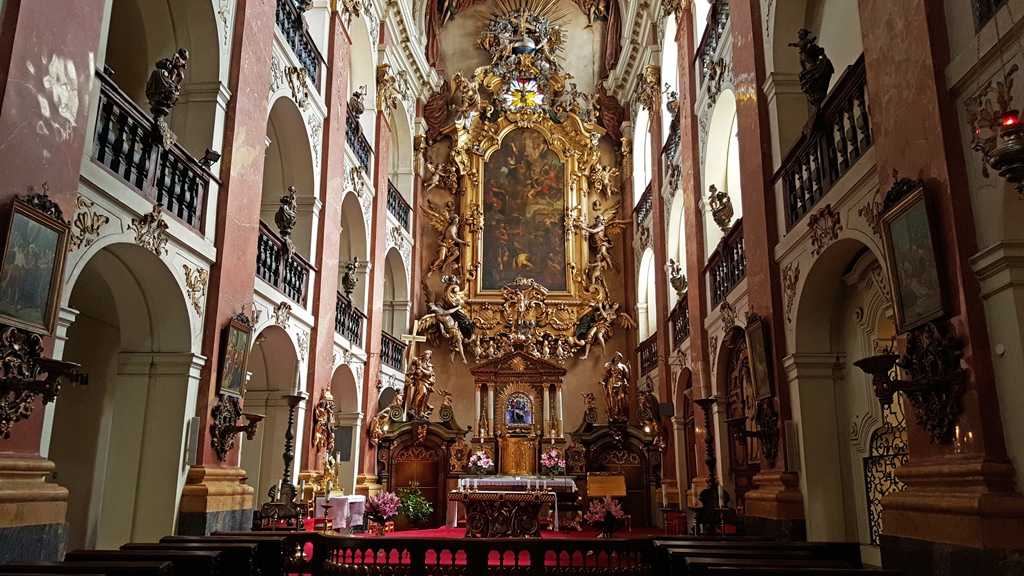
Choir Area
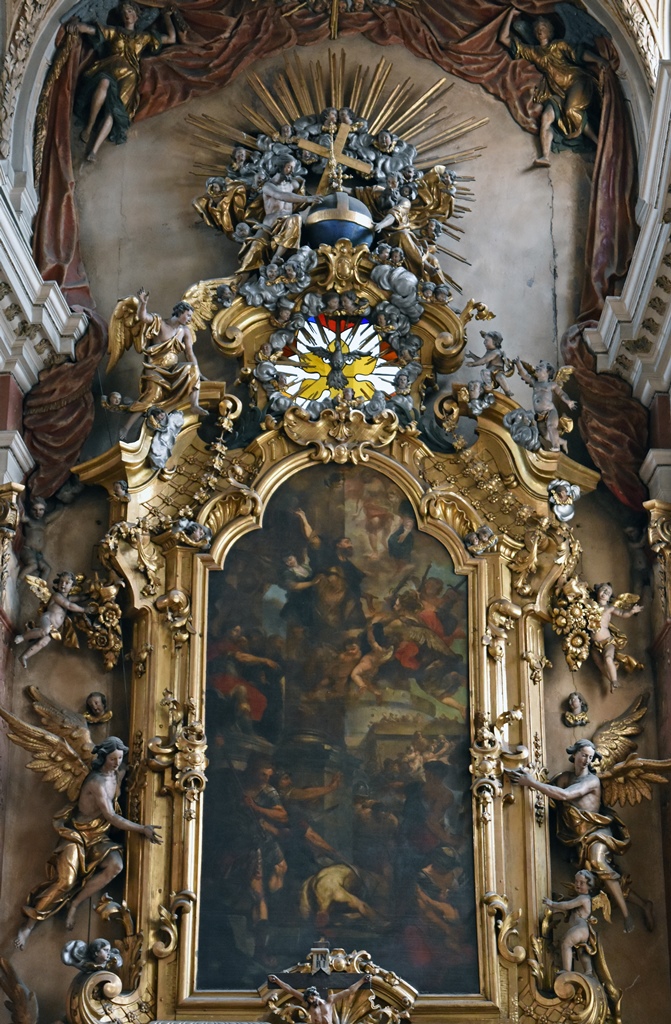
The Passion of St. James (V.V. Reiner)
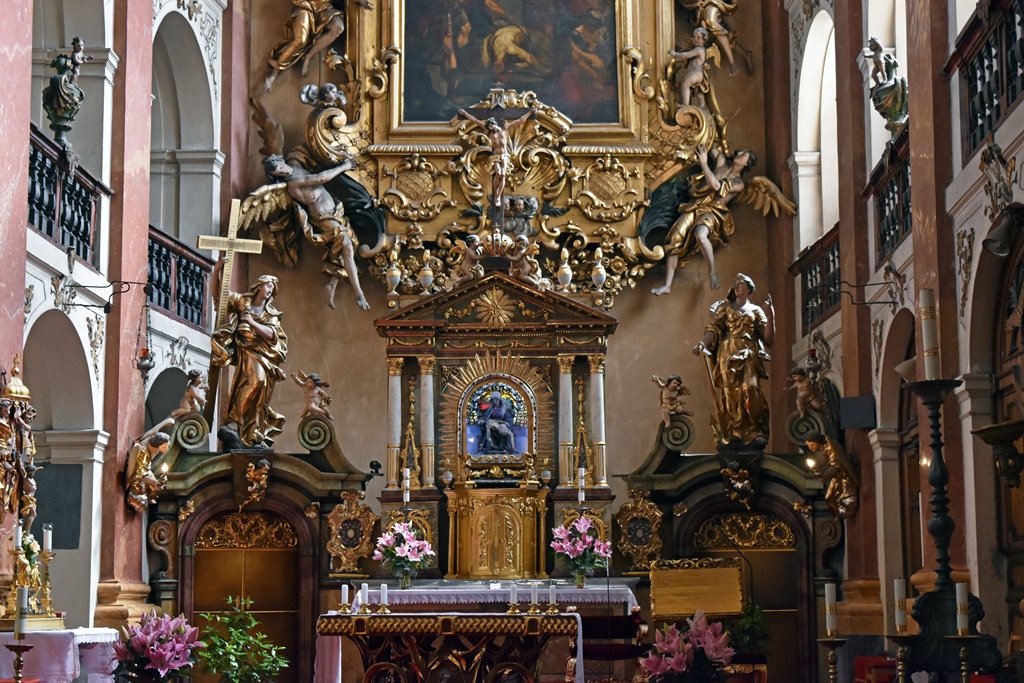
Main Altar, I.M. Platzer

Inside the Church
Some of the objects in the St. James church have legends attached to them. The large painting
of the Passion of St. James was painted by the Baroque painter Václav Vavřinec Reiner. It’s said
that it was painted during a period of plague in Prague, and that people around the painter were
dying at a horrific rate. The painter himself appeared to be untouched, however. Until he
finished the painting, that is. According to the legend, the painter was stricken with the
plague just after finishing the painting, and he died later the same day. The moral to this
story is that one must never finish projects – it’s only asking for trouble. There is also a
legend regarding the Madonna Pietatis, but we’ll get to that later.
Looking up from our position at the front of the center aisle (or from anywhere else in the
center aisle), it’s impossible to miss a series of frescoes painted on the ceiling. These
frescoes were painted in 1736 by a painter named František Voget, and they depict Scenes from
the Life of the Virgin Mary.
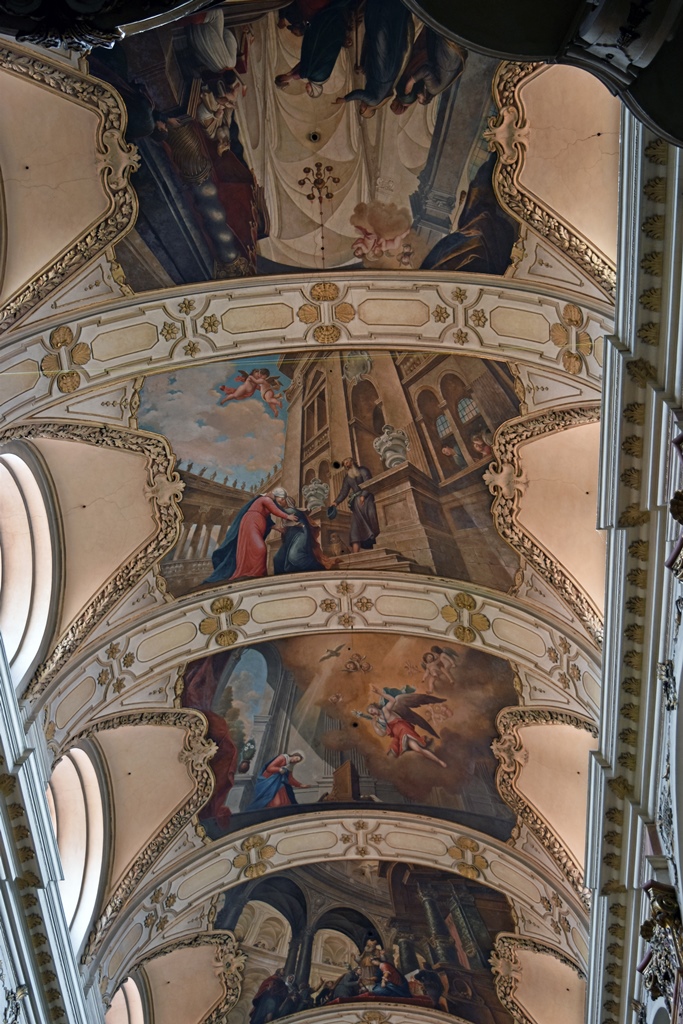
Scenes from the Life of the Virgin Mary, František Voget (1736)
Also near the front of the center aisle is the church’s Baroque pulpit.
Pulpit
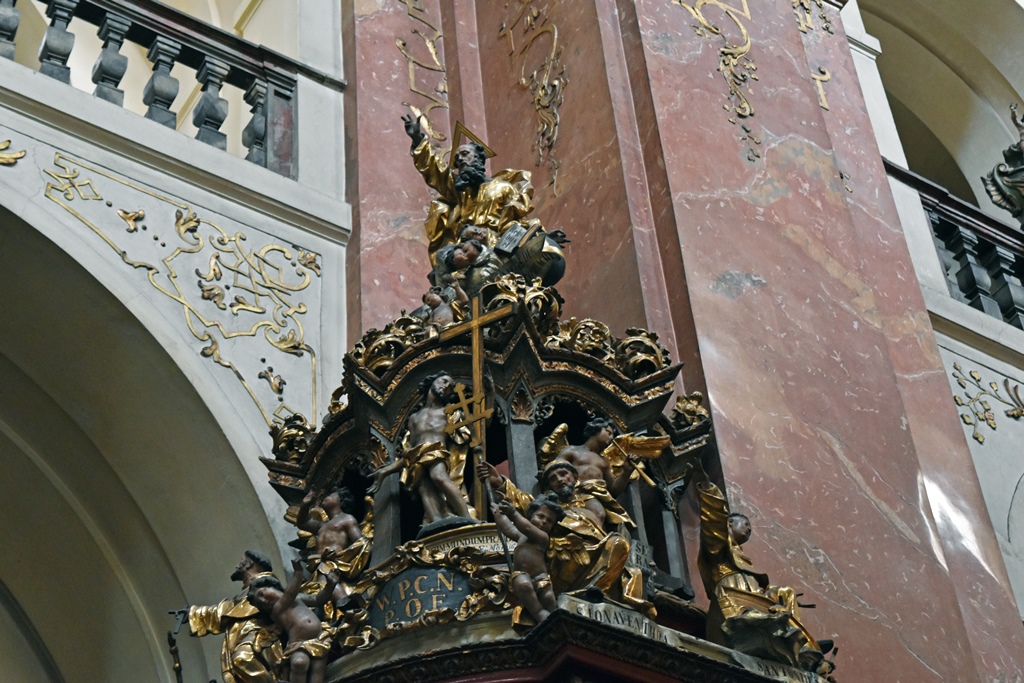
Pulpit Detail
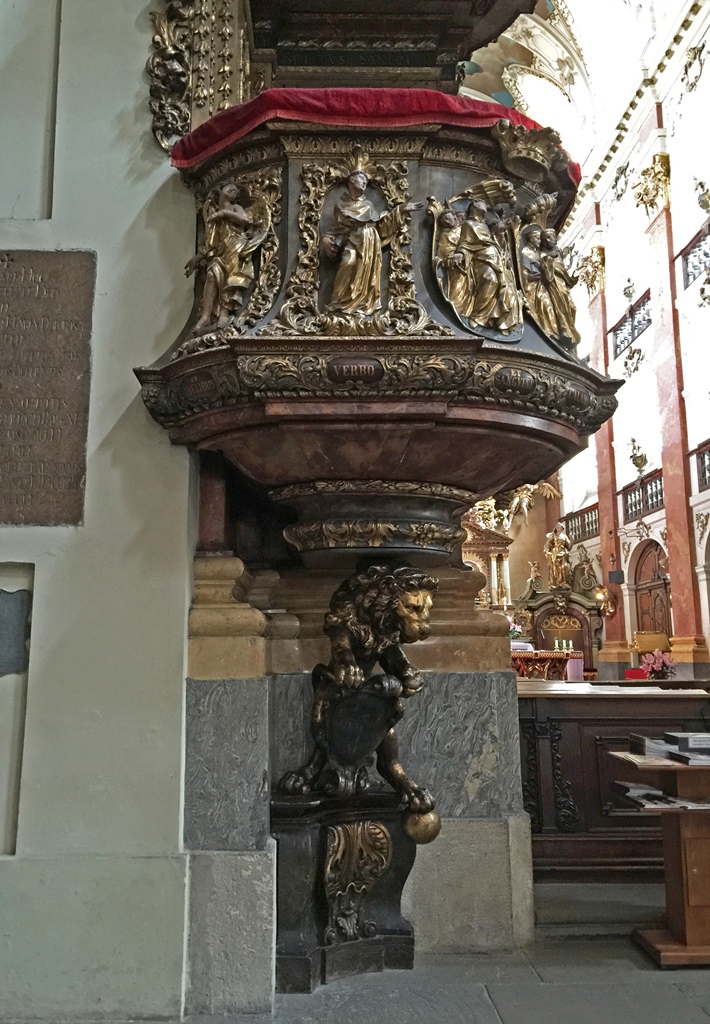
Pulpit Detail
On either side of the center aisle, there are many Baroque side altars, 22 of them in all,
including a substantial amount of work by artists Ottavio Mosto and Petr Brandl. We were
not allowed to depart from the center aisle to get a better look at them, but here’s some
of what we did see:
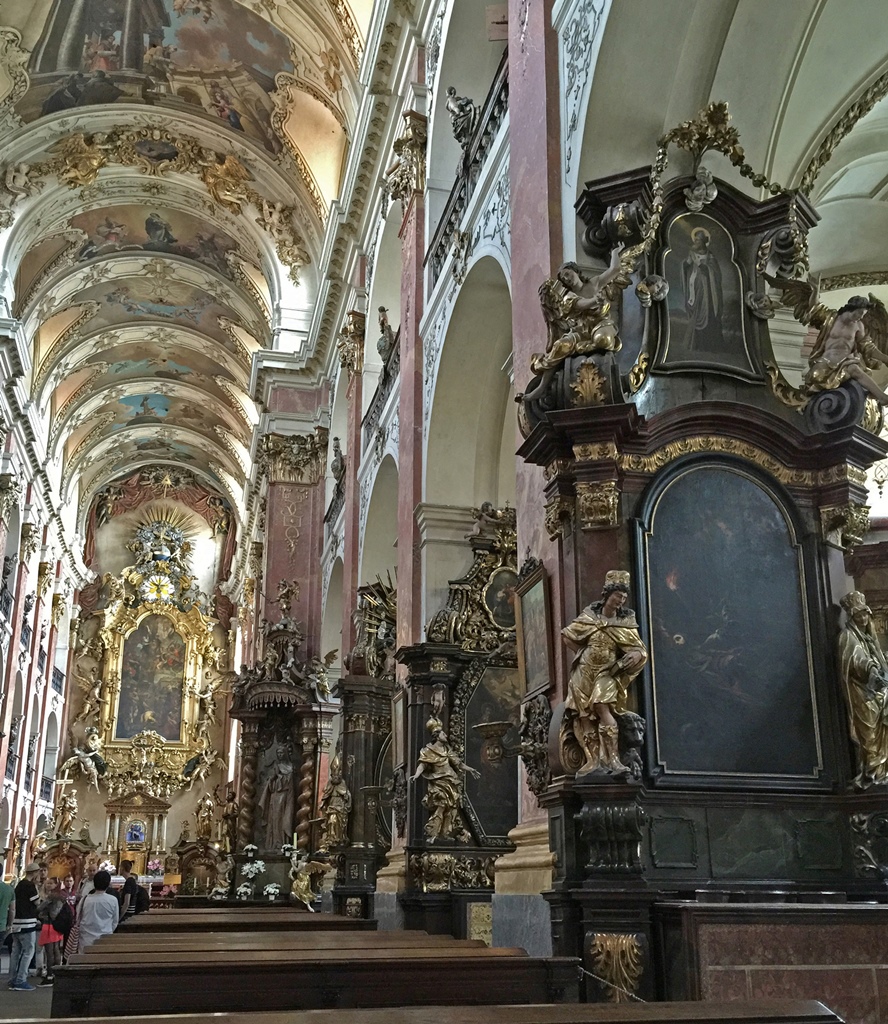
Side Altars
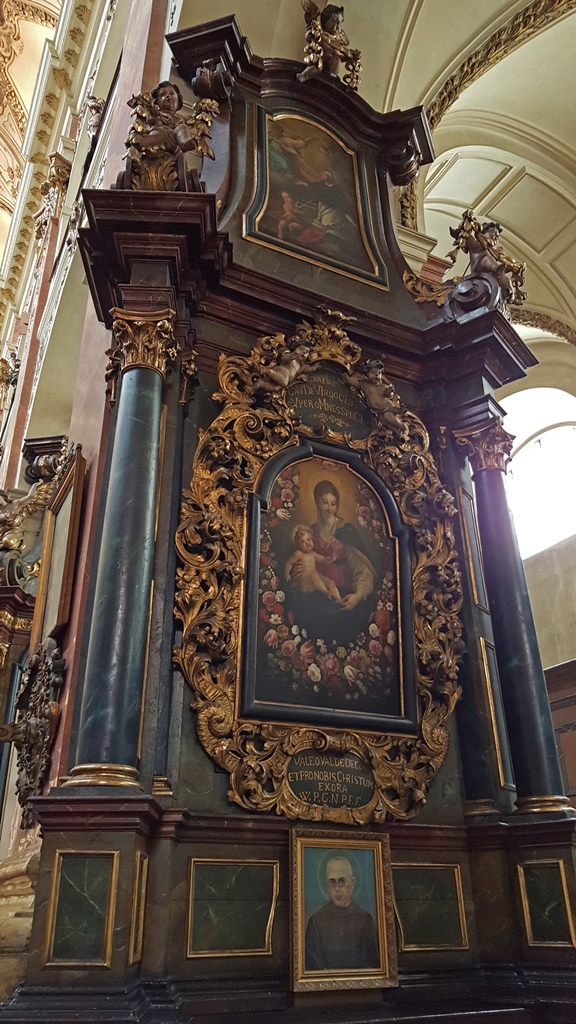
Side Altar - Madonna, Child and Flowers
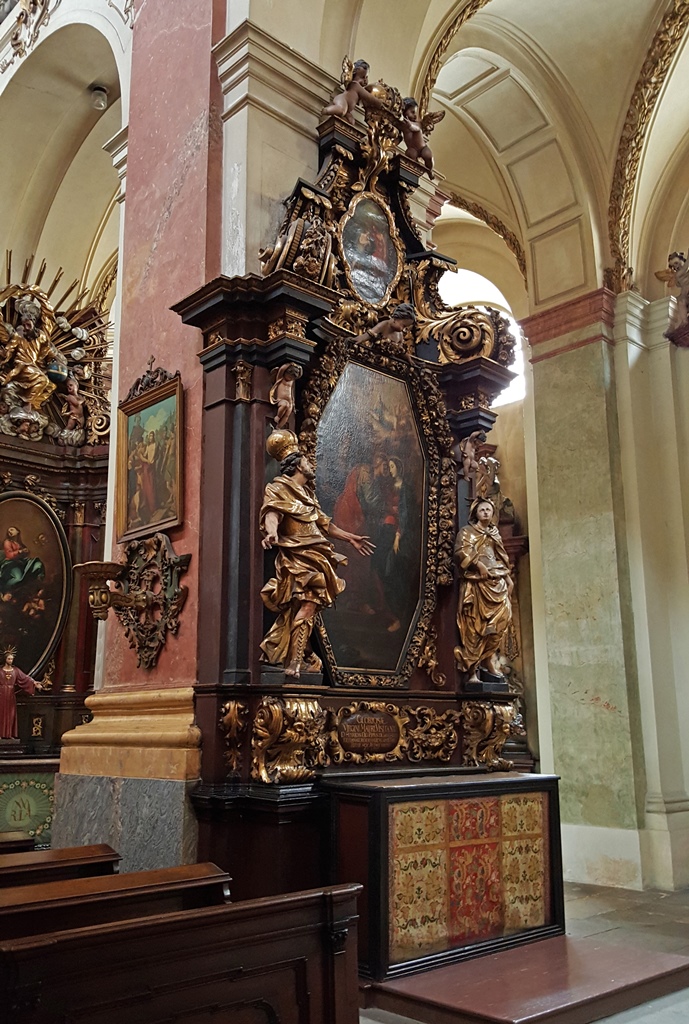
Side Altar
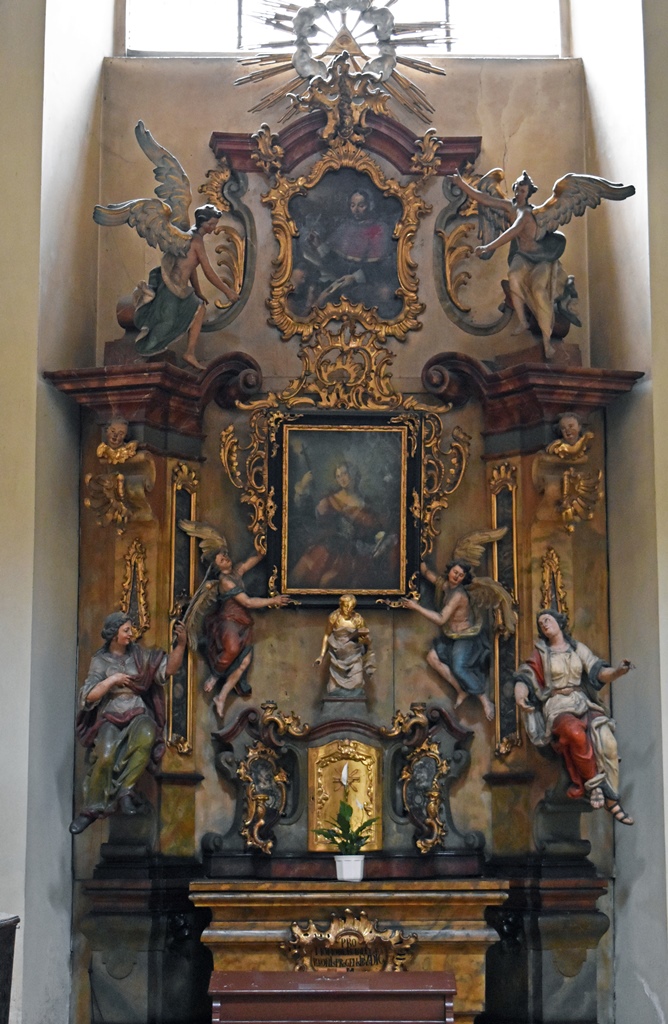
Side Altar
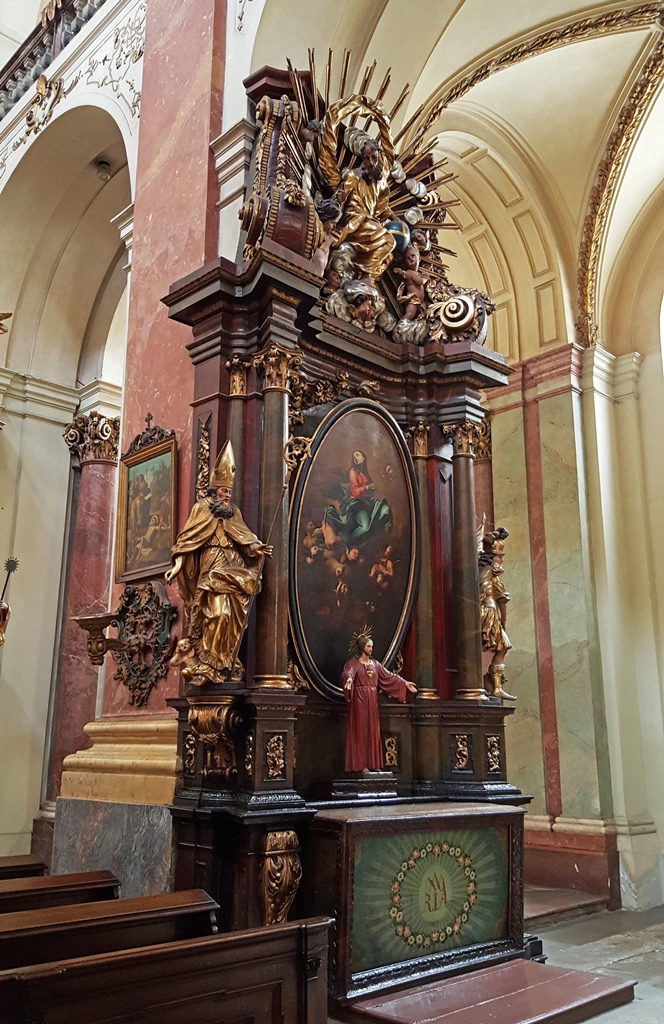
Side Altar
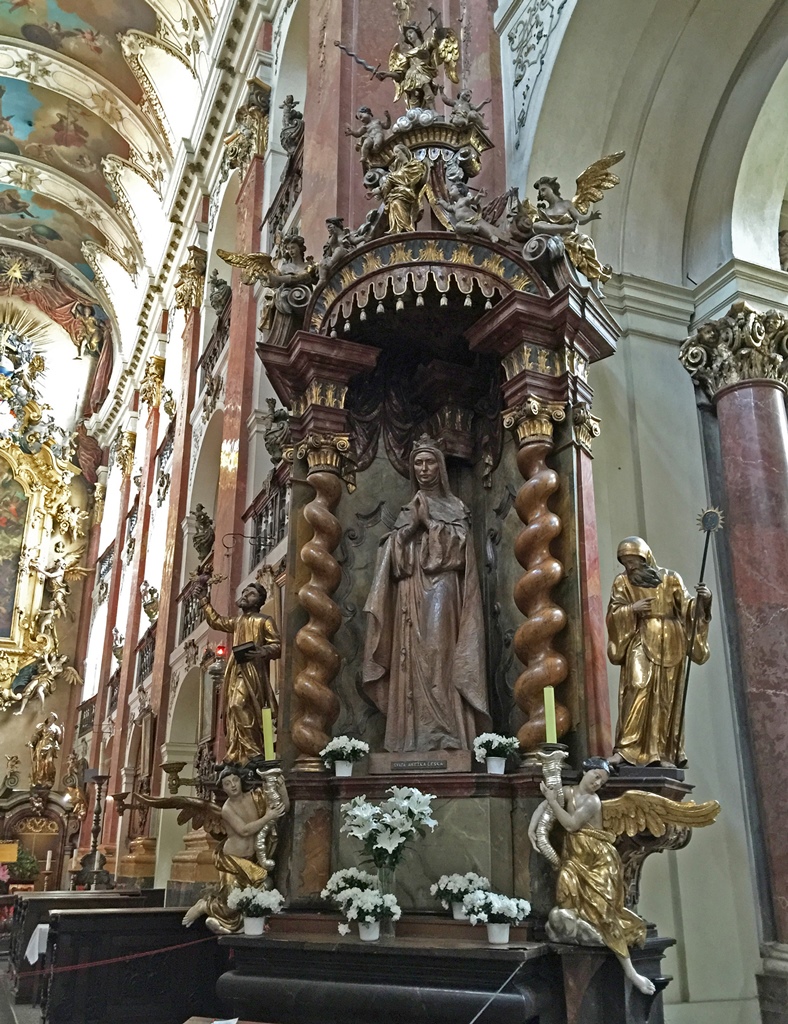
Side Altar - St. Anne
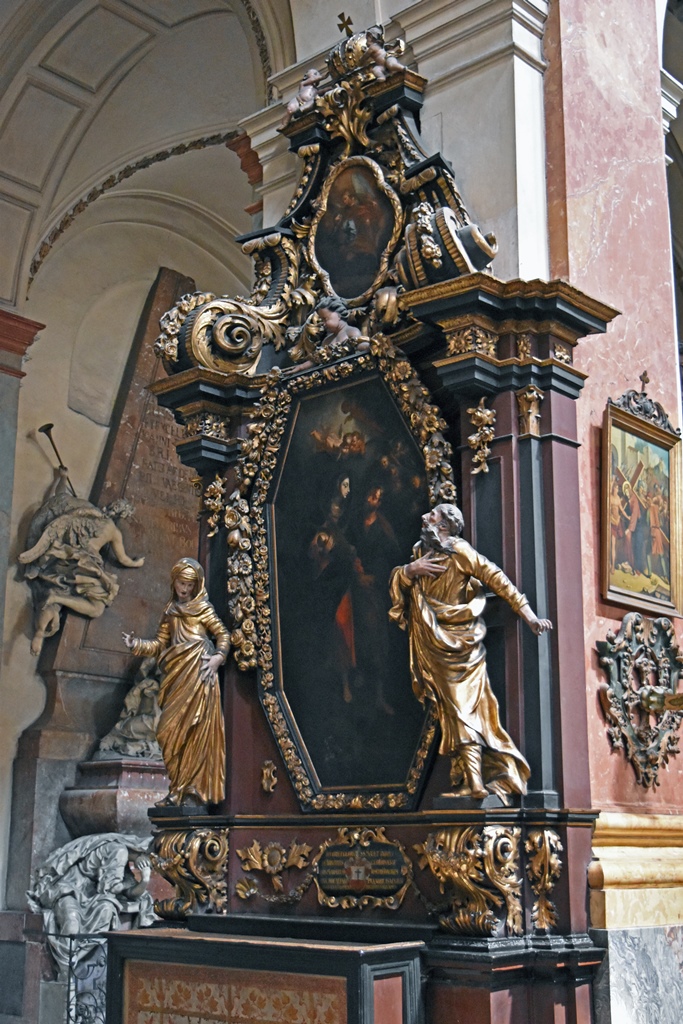
Side Altar
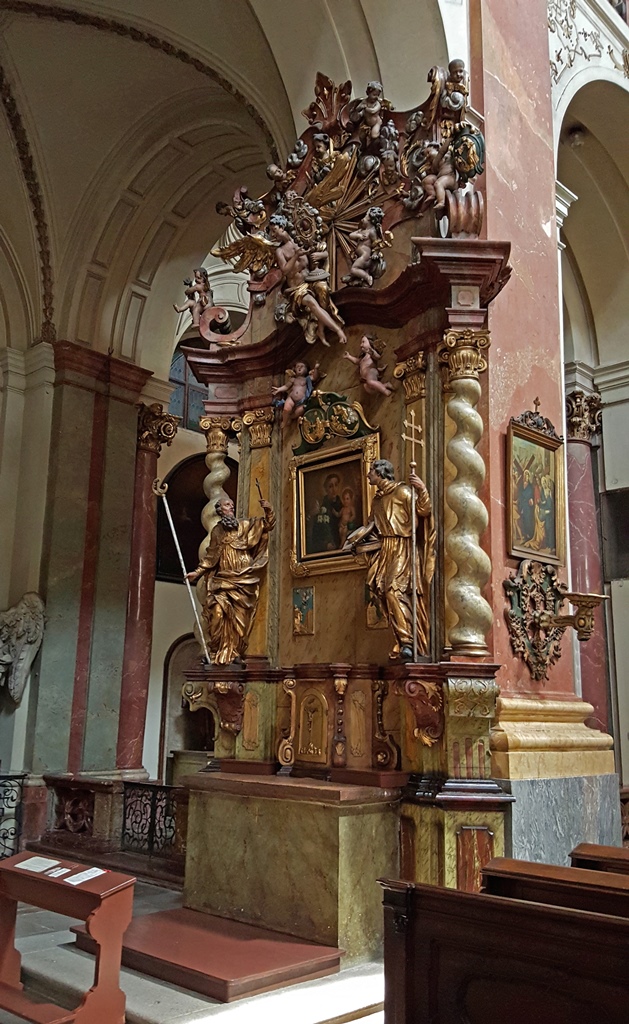
Side Altar
Against the wall on the north side of the church is an impressive tomb, the work of sculptors
J.B. Fischer and F.M. Brokoff, completed in 1716. The tomb is that of Jan Václav Vratislav
of Mitrovice, High Chancellor of the Kingdom of Bohemia, who died in 1712.
Tomb of Jan Václav Vratislav, Fischer and Brokoff (1714-16)
This brings up another legend of the church. According to the legend, when Václav died, he
was buried (at first) in a coffin under a large marble slab. A couple of days later,
strange noises seemed to emanate from the grave, and out of fear, the grave was doused with
holy water to ward off demons. The noises stopped after a couple of days. Some time later,
when the grave was opened for the funeral of Václav’s son, the wooden coffin of Václav Sr.
was found to be broken, and Václav’s body was found in a sitting position. Seems he hadn’t
quite been dead yet…
On a happier note, heading back toward the entrance, we couldn’t help but notice the
church’s organ, which inhabits a loft above the entrance. The original organ dated back to
1705, but a number of major reconstructions have happened since then. The latest was
completed in 1982, and it restored many voices that had been removed in earlier
reconstructions. Organ aficionados might be interested in hearing that the organ currently
has 4 manuals, 91 sounding registers and 8,277 whistles. I’m not sure what all of that
means, but 8,277 sounds like a lot of anything. The organ is the largest in Prague and the
second largest in the Czech Republic. Concerts are performed on a regular basis.
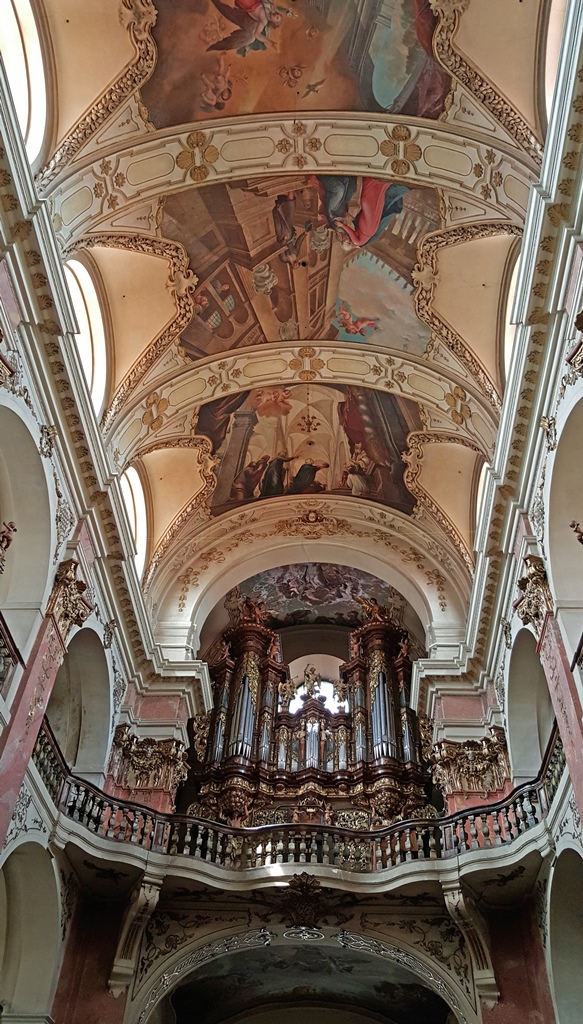
Organ and Ceiling
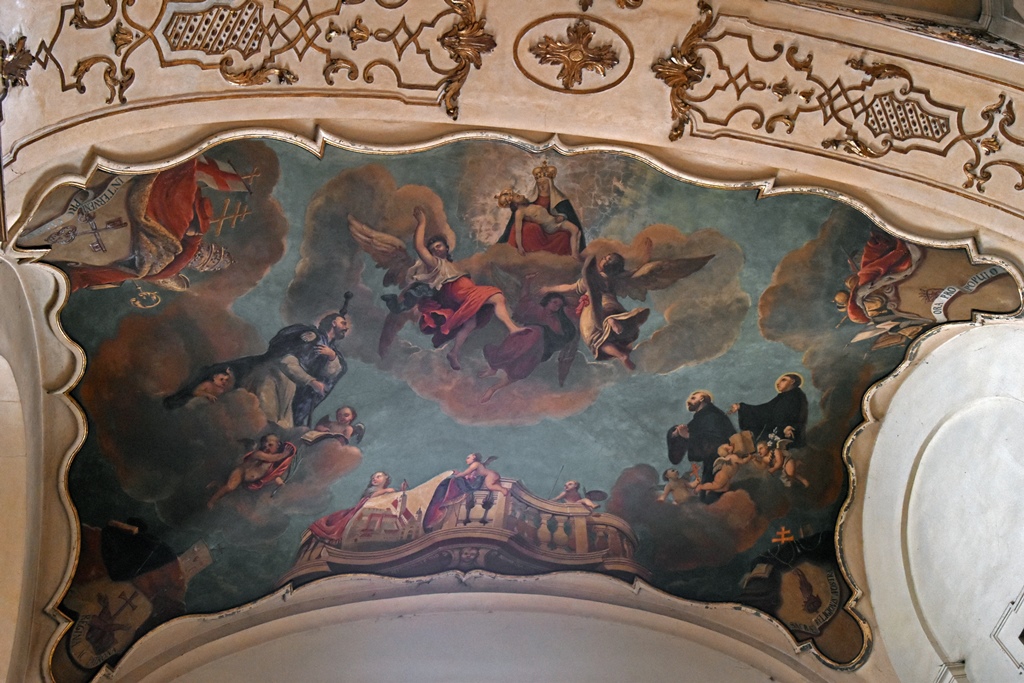
Ceiling Panel of Crowned Virgin Mary
On the way out, we were reminded of one final legend of St. James’s Church. Unlike the
other legends cited above, this one has actual physical evidence on display, for everyone
to see. There seem to be different versions of this legend which differ in their details,
but after hundreds of years the details don’t really matter that much. One night centuries
ago, a thief managed to hide in the church after the last service, so he had the place to
himself after everyone else left for the night. He started collecting articles of value
unimpeded, until he made one bad mistake. He tried to steal something from the immediate
vicinity of the Madonna Pietatis, the blue-lit statuette discussed above. Exactly
what he was trying to steal differs in the various versions of the story (valuable objects
nearby, monetary donations left nearby, or the statuette itself), but the part that matters
is that the Virgin in the statue was having none of this, and responded by somehow grabbing
the thief’s arm in a death grip that could not be broken. The thief tried everything to
get the mighty Virgin to release her hold, but to no avail, and he was found the next
morning in an extremely compromising situation. The church personnel also couldn’t
persuade the Virgin to let go, so somebody found a handsaw. The offending arm was removed
from the thief, the Virgin released her grip, and the church had a souvenir. The
now-mummified arm can be seen hanging from a chain inside the church’s front door as a
cautionary display for other would-be thieves.
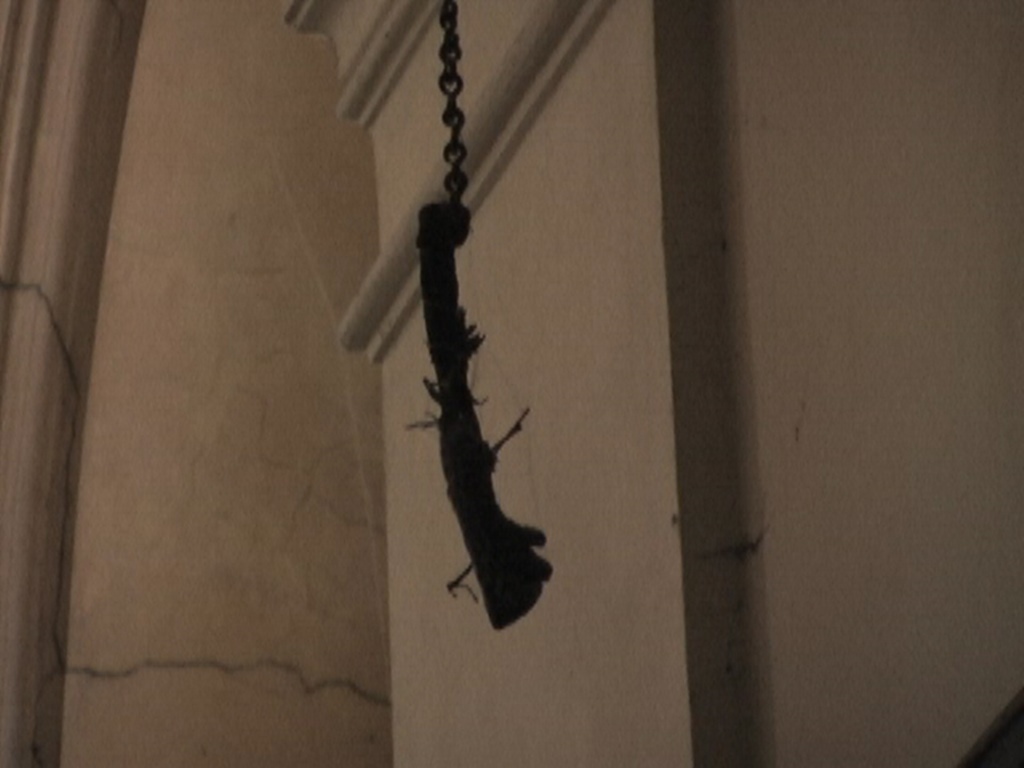
Thief's Arm
Having heard enough legends for the time being and having seen what we could, we
left the St. James church and headed back toward the Old Town Square. We passed
through the square and continued westward toward the Vltava River. The river was
where the bridges were (and are), and our next destination was Prague’s most
famous one, the historic Charles Bridge.


